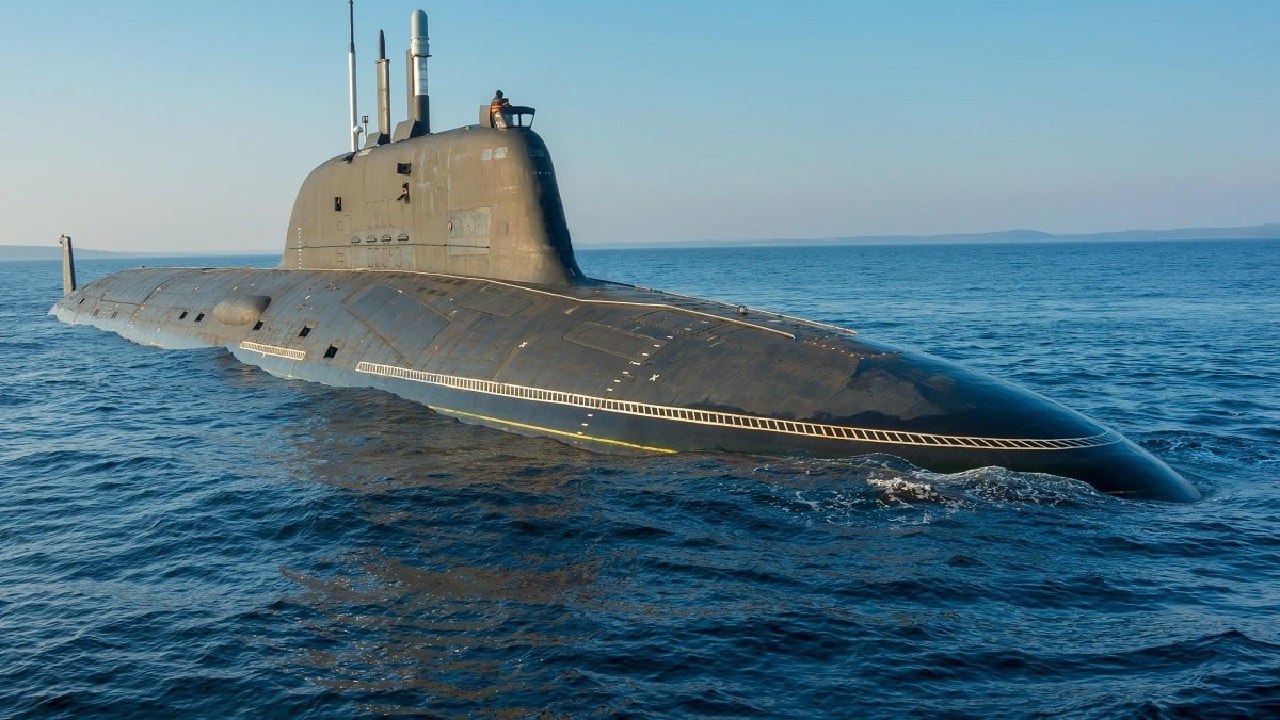Key Points and Summary – Russia’s submarine fleet remains “arguably second only to the United States,” built on a formidable nuclear deterrent of 15 SSBNs, including the new Borei-A class.
-It is aggressively modernizing with “quieter” Yasen-class attack subs, Zircon hypersonic missiles, and the new Khabarovsk submarine, which deploys the Poseidon “giga torpedo.”
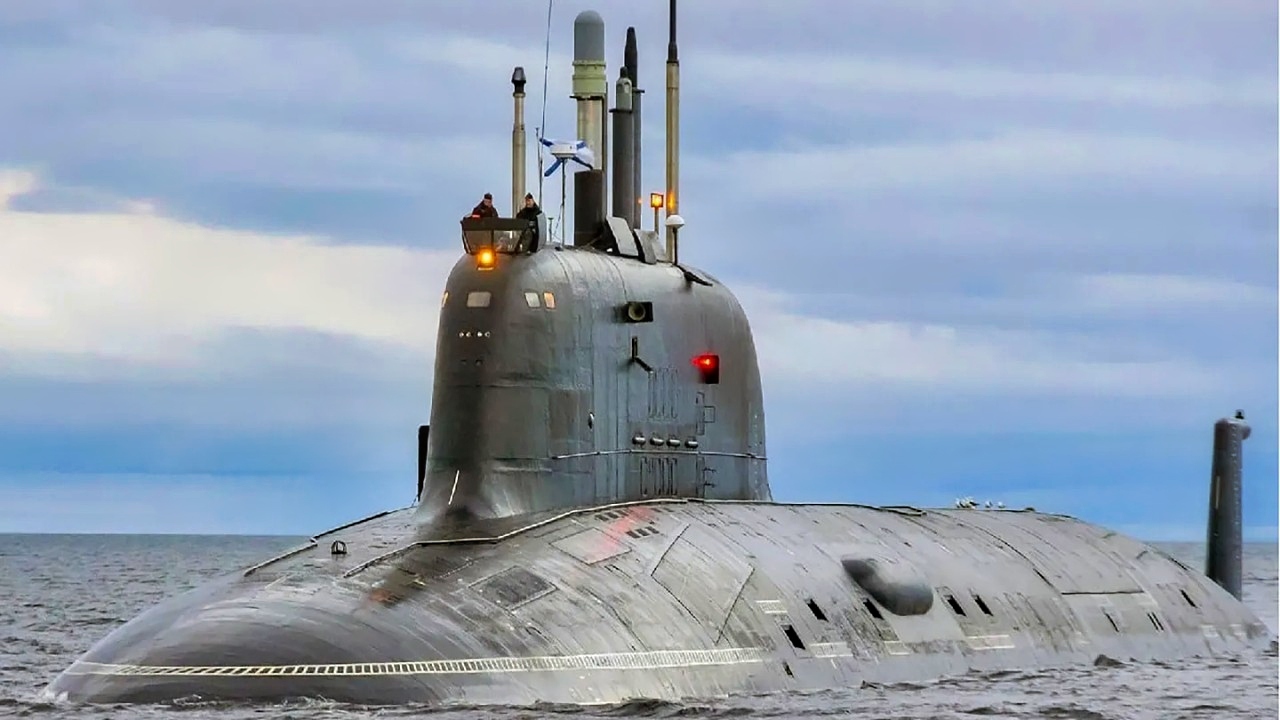
Yasen-Class Submarine from Russian Navy. Image Credit: Creative Commons.
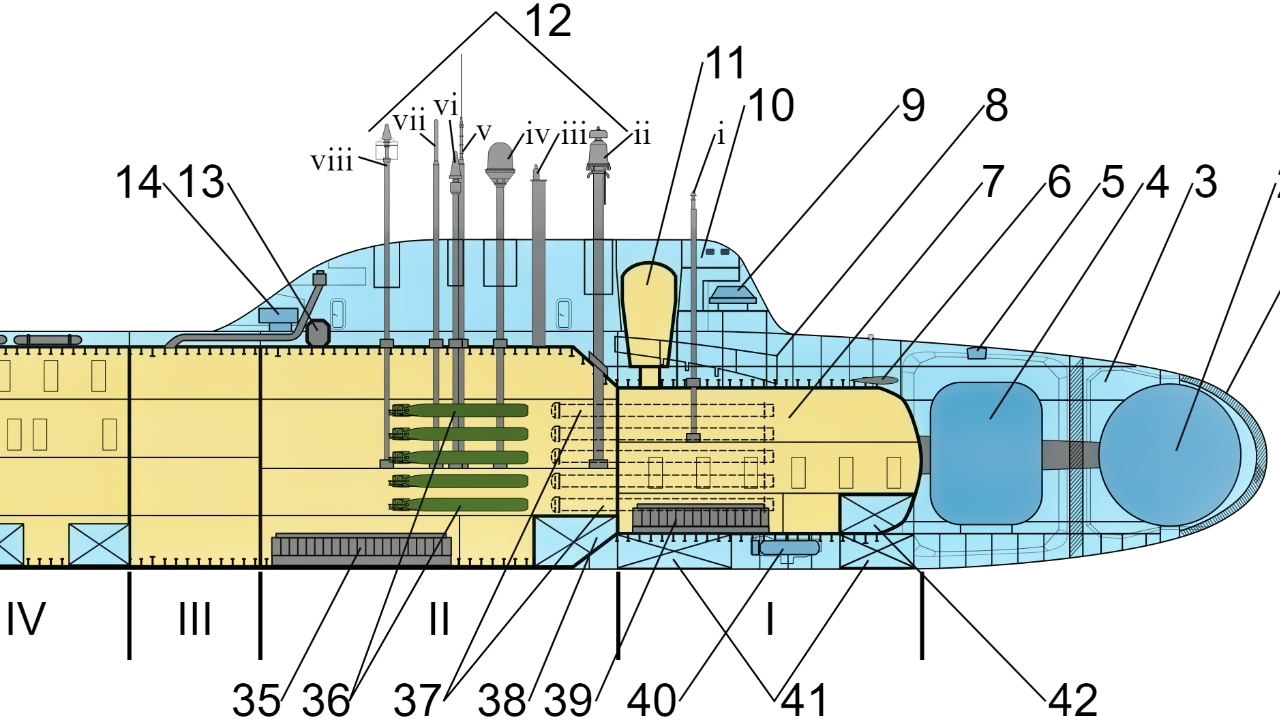
Yasen-Class Submarine from Russia. Image Credit: Creative Commons.
-However, this high-end potency is undermined by “significant downsides.” The fleet is “struggling” and “stretched too thin” due to the Ukraine war, which has “curtailed” resources.
-It is also plagued by “maintenance problems,” “cost overruns,” “international sanctions,” and a large, “noisy and obsolete” diesel-electric fleet that lacks modern AIP technology.
The Russian Submarine Fleet Summed Up in 4 Words
Russia has one of the best submarine forces in the world – arguably second only to the United States.
There are 64 boats in the fleet and an impressive 15 nuclear-powered ballistic missile subs (SSBNs) that form a critical leg of the Russian nuclear triad. Despite the war in Ukraine, the Russians have modernized the fleet since the annexation of Crimea in 2014.
The Russians believe they have the best group of submarines on the globe and have the stealthiness and swiftness to encroach on enemies and launch ballistic and cruise missiles at an adversary with devastating effect. The Navy can also use its silent service as hunter-killers to eliminate enemy subs and surface ships.
Quick Summary of the Russian Submarine Fleet
The Russians have 14 nuclear-powered fast-attack submarines and 11 nuclear-powered cruise-missile submarines.
There are 23 older but effective diesel-electric boats, none of which are equipped with the deadly-quiet air-independent propulsion (AIP) systems.
Yasen-class and Borei-class Are Considerable Upgrades
Russia plans to replace its aging attack submarines with the Project 885-M Yasen-class submarines.
These are quieter and can bring the fight to the enemy with ease by sneaking around carrier strike groups, eliminating escort vessels, and firing effective cruise missiles at land targets.
The Borei A-class is the new SSBN that will allow the Russians to have a powerful nuclear deterrent against NATO members.
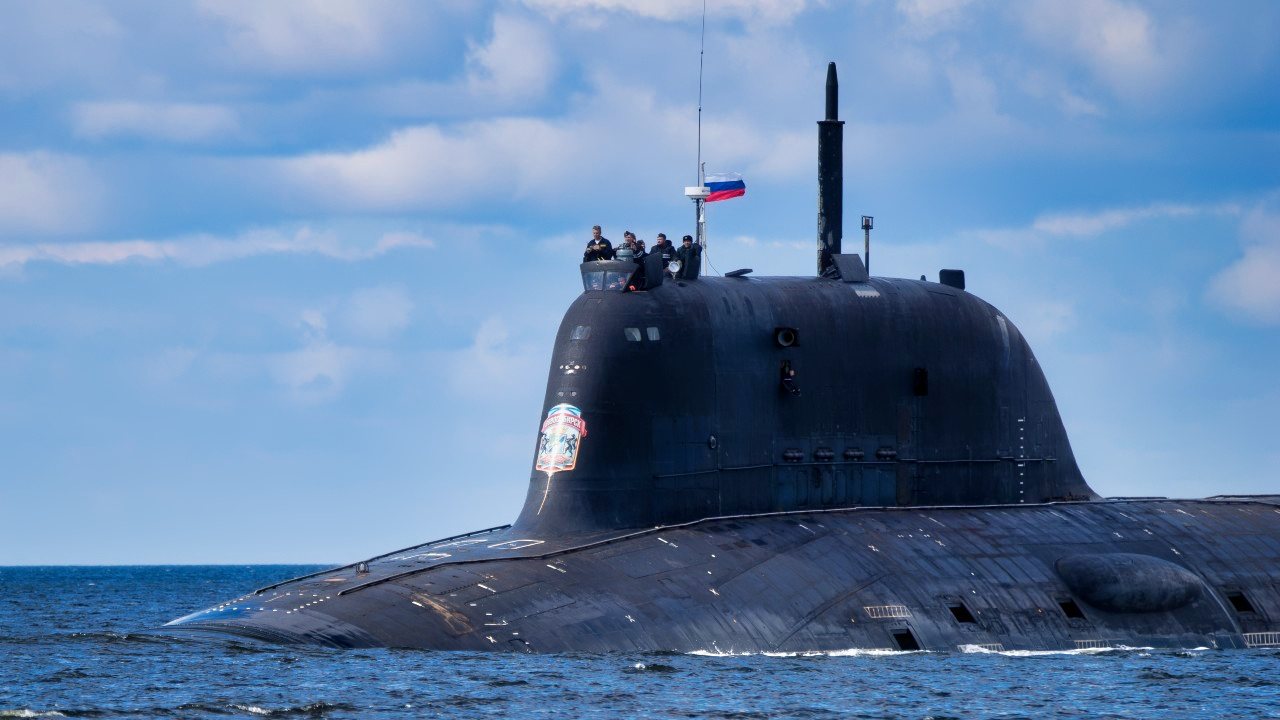
Yasen-Class Submarine Russian Navy. Image Credit: Creative Commons.
“In 2017, Russia launched its first Borei-A class submarine, ‘Knyaz Vladimir,’ which features incremental upgrades to the original design. In 2021 the Knyaz Vladimir was deemed fully operational by the Russian military and has since participated in unprecedented expeditions under the ice,” according to the Nuclear Threat Initiative.
Modernization Efforts Are Underway With New Missile Capabilities
Two new Borei-K class boomers will be built, giving Russia additional prime SSBNs to bully its neighbors and threaten the United States.
Attack subs will be fitted with Kalibr cruise missiles. A Russian attack sub successfully tested a Zircon hypersonic missile in the Barents Sea in 2021. The plus-MACH five weapon will be a key part of the Russian submarine force.
On November 1, Russia launched the new Khabarovsk nuclear submarine that can deploy the Poseidon nuclear-powered sea drone that is equipped with a strategic warhead.
The “giga torpedo” could create a “radioactive tsunami.”
The Poseidon is one of Vladimir Putin’s “super weapons” aimed at changing the strategic balance of power in Europe.
This is all well and good, but there are downsides to the submarine force. The Russians have endured maintenance problems and reliability issues among some of the older submarines. There have been numerous delays and cost overruns when it comes to producing the newer boats.
Defense spending on the submarine fleet has been affected by the war against Ukraine. Resources for the Navy have been curtailed to fortify ground forces. International sanctions on advanced components have constrained supply chains. Fluctuating oil prices have hurt the treasury, making monetary resources for the submarines scarce.
A Deterrent Force That Does Not Have Much Power Projection
While Putin loves his submarine-launched nuclear missiles, these have not deterred the United States and allies from sailing ships in the Russian Near Abroad. Even though the new Russian submarines are impressive on paper, they may not be operated with the kind of skill and expertise from individual sailors that the Americans and allies have exhibited in their submarine fleets.
The Russians must make difficult choices with a navy that has struggled during the war. The Black Sea fleet has been rendered useless. The Moskva flag ship was sunk at the beginning of the conflict. The submarine force may be stretched too thin, as the Russians seek to patrol their long borders and push into the Atlantic, Arctic, and Pacific Oceans. That is a challenge to the submarine fleet.
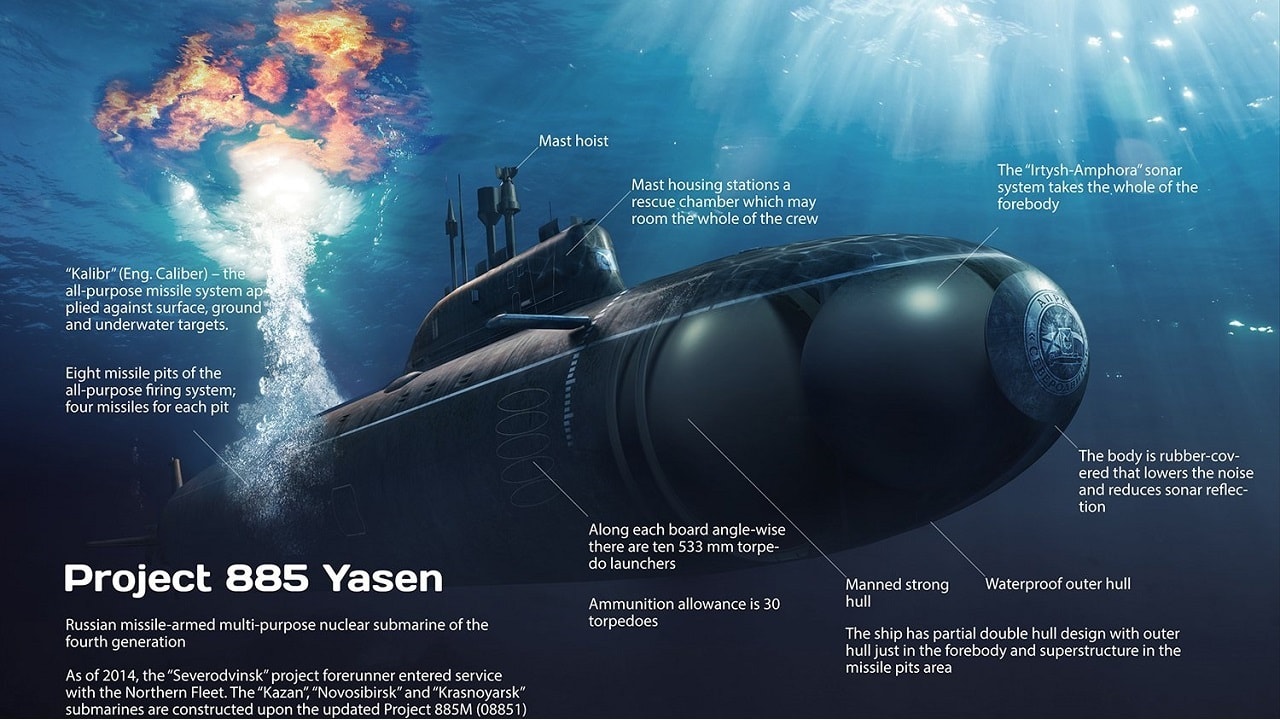
Yasen-Class submarine. Image Credit: Russian Government.
Russia is struggling to keep up with new submarines from America such as the Virginia-class and Columbia-class. Putin’s navy could be outclassed by the United States which has technological advantages in speed and stealth, plus more accurate ballistic and cruise missiles.
What Is the Overall Subsea Warfare Strategy?
Putin and his admirals must decide on the strategy and operational art behind the submarine fleet. Is this purely a defensive force that polices borders? Can new submarines be built on time and under budget? Are the maintenance needs behind schedule? Can the subs best the latest American models?
All of these questions must be answered. Land warfare is taking up too many resources for the Russians. The army has precedence with new tanks and armored vehicles forming the main industrial priorities.
Putin may have less ambition for the submarine force. Nuclear hegemony is needed, which explains the effort to build SSBNs. But the older diesel-electrics are noisy and obsolete.
This means the Russian submarine force is entering a holding period as new variants come online. Money and resources are scarce. Government funding from oil revenues is decreasing. Sanctions are taking a toll, and shipyards are struggling to fill orders.
The Russian submarine fleet is entering a critical period. Can it deliver the Poseidon, and will those weapons be as super as Putin hopes? Can older fast-attack subs become quieter with new noise cancellation technology? Will more SSBNs be built to enable Russia to maintain nuclear parity with the United States and its NATO allies?
In 4 Words: Lots of Unanswered Questions
Russian submarines remain relevant, but numerous unanswered questions remain. Keeping a submarine force up to date and well-maintained requires a strategic mindset that demands constant resources and oversight from the Kremlin and the admirals who serve in the silent service. This is a time for land warfare and not sea battles.
The Russians must understand that they can’t add new undersea warfare assets without the money and the expertise in shipbuilding that deliver new subs quickly and efficiently, on budget and on time.
The Russian nuclear strategy depends on the best submarines it can build in the 2030s and beyond, but it must execute a new doctrine that can overwhelm the West, and this is not 100 percent assured.
About the Author: Brent M. Eastwood
Brent M. Eastwood, PhD is the author of Don’t Turn Your Back On the World: a Conservative Foreign Policy and Humans, Machines, and Data: Future Trends in Warfare plus two other books. Brent was the founder and CEO of a tech firm that predicted world events using artificial intelligence. He served as a legislative fellow for US Senator Tim Scott and advised the senator on defense and foreign policy issues. He has taught at American University, George Washington University, and George Mason University. Brent is a former US Army Infantry officer. He can be followed on X @BMEastwood.
More Military
The Mach 3 SR-71 Blackbird Spy Plane ‘Broke All the Rules’ Thanks to Titanium
SR-72: The Air Force’s New Hypersonic Bomber?
Russia’s Admiral Kuznetsov Aircraft Carrier Is Now ‘Non-Operational’
New Army M1E3 Tank vs. Russia’s T-14 Armata: Who Wins Summed Up in 2 Words


